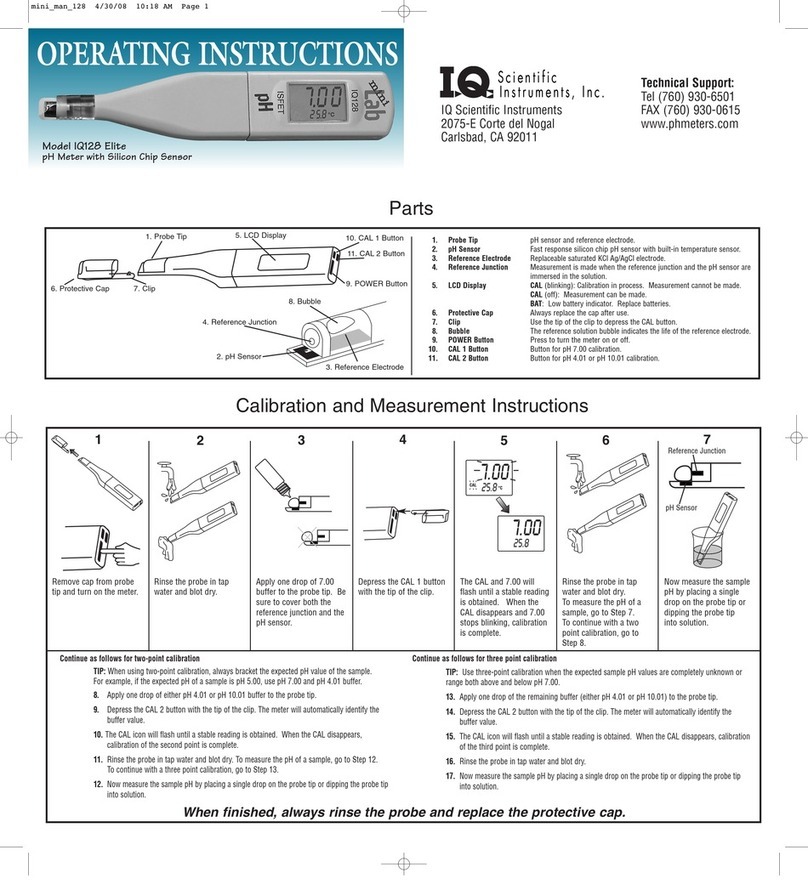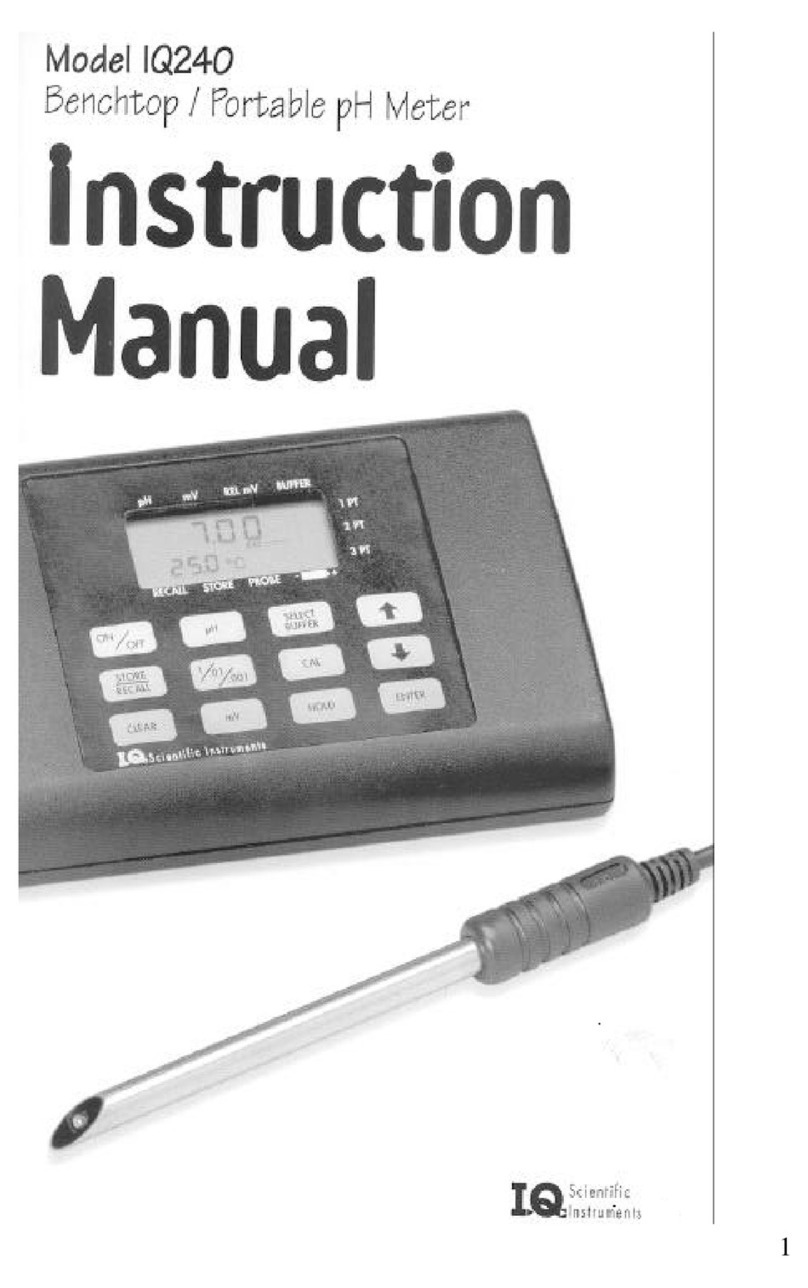
5
DO NOT
DO NOT: change pH probe types (switch between BNC and ISFET probes)
while the meter is turned on. Always turn off the meter before changing
probes.
DO NOT: simultaneously use ISFET and BNC probes. Only have one type of
probe attached to the pH meter at a time. NOTE: Both pH and conductivity
probes can be simultaneously attached to the IQ170 multi-parameter meter.
DO NOT: store an ISFET probe in solution or use for long-term pH measuring
applications. Unlike BNC electrodes, stainless steel ISFET electrodes should
be stored dry. Extended immersion will shorten the life of the probe.
DO NOT: leave an ISFET probe uncapped for long periods of time. Always
place the protective cap over the probe tip when finished measuring.
DO NOT: allow oil, fat, food particles, starch, protein, or other materials to
remain on the probe tip after use.
DO NOT: use a sharp metal object (needle, pin, etc.) to clean the sensor
surface.
DO NOT: take readings in direct sunlight. Direct sunlight may cause unsta-
ble readings or difficulty in calibration. Call IQ Scientific Instruments or your
Authorized Dealer for optional light shields.
DO NOT: use the probe in an environment that will damage the sensor, such
as hydrofluoric acid or abrasive samples.
DO NOT: use the probe in environments that will damage the epoxy materi-
als used in the probe tip. Avoid acetone, toluene, methylene chloride, xylene,
and other strong organic solvents.
DO NOT: use in environments with static electricity. Electrostatic discharge
may permanently damage the probe.
DO NOT: expose the ISFET probe to repeated temperature extremes (60 oC
or higher). Do not use the probe for applications that require the probe to
cycle between hot and room temperature samples.
DO NOT: put any other active measurement devices in buffers or samples
while measuring pH or conductivity. Even if another device is not actually
turned on, AC power interference can still occur.





























